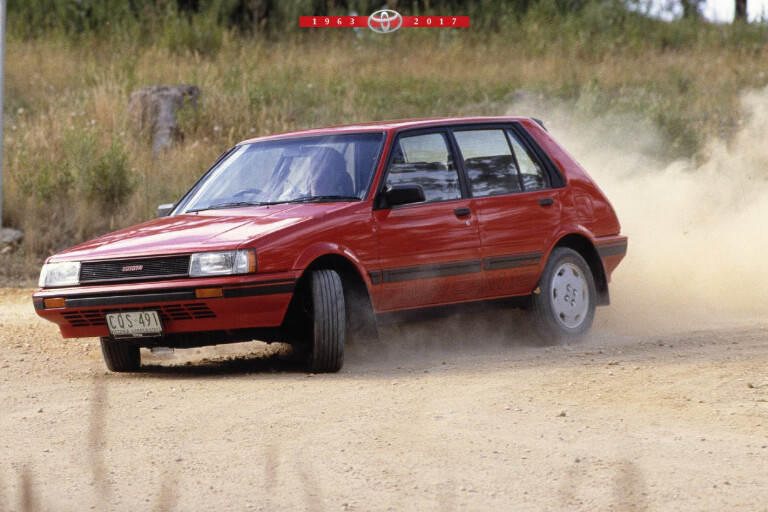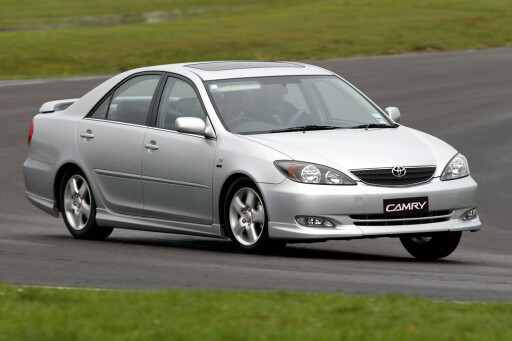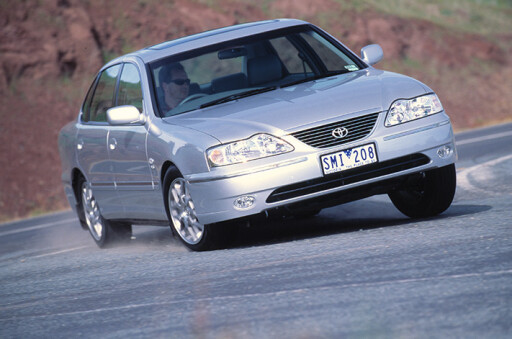
BEIGE cardigan? Appliance on wheels? Uninspired?
Some Toyotas certainly deserve to cop a serve, but for every Avalon, Nagoya has provided a model that delivers driving nirvana, such as the Toyota 86, ’86 Celica and AE86 Levin/Sprinter/Trueno.
Not one of these is even remotely Aussie-made, but that’s not to say the Melbourne-based factory didn’t turn out some gems over almost 55 years of operation.

Consider the shovel-nosed 1964 RT40 Corona, the best of the locally built series by far.
While the Pininfarina-assisted styling made it stand out, the real appeal lay in the Toyota’s dependable and user-friendly engineering, down to a slick manual column shifter and torquey 1.5-litre four-cylinder engine. Or, if you preferred, an incredibly smooth (but performance-sapping) two-speed Toyoglide.

That family recipe was scaled down successfully in 1967’s KE10 Corolla. It was relatively quick, affordable and – most of all – a hoot to hurl through corners, at a time when most low-priced alternatives were none of the above.
Wheels went gaga for the KE10, revelling in its lusty performance and engaging handling. Sadly, later Aussie-built rear-drive Corollas lost the cheek of the Swinging Sixties original. It wasn’t until nearly a year after the series went front-drive in the mid-80s that the real jewel became apparent, courtesy of the 1986 AE82 Corolla Twin Cam 16.

Always eager to scream past 7500rpm, the joyous 4A-GE 1.6 nicked from the MR2 developed a fizzy 86kW and hurled the 975kg hatch from zero to 100km/h in under 10 seconds. And while the steering wasn’t hot-hatch sharp, the chassis entertained.
The RT140 Corona from 1983, conversely, was almost the worst Australian-made Toyota ever, despite its angular contemporary styling and appealing dashboard presentation. Poor packaging, gruff engines (especially the agricultural 2.4), wayward handling and a punishing ride sealed the rear-drive family car swansong from Toyota as a complete turkey, way off the cracking pace set by Mitsubishi’s TM Magna.

Yet the early-80s Corona initially seemed brilliant, compared with the preceding RT130 Corona of 1979, with its turgid Holden 1.9-litre Starfire 4 lump. The final candidate for worst Aussie Toyota ever is still aeons ahead of the later Coronas, the 2002 XV30 Camry.
The bloated design sat awkwardly over the narrower-than-intended track, since the Australian version of this American midsizer retained a smaller, earlier platform for cost-saving reasons. This may have also explained the twitchy handling. Meanwhile, extra kilos blunted any sense of oomph from the ageing 2.4-litre engine.
Aussie Originals
Crown Utility (1965-71)
Toyota assembled the Crown locally to take on Holden and Falcon. The body-on-frame construction lent itself brilliantly to workhorse duties. The redesigned S50 from 1968 was reportedly created with Oz in mind. But Toyota pushed Crown upmarket in the 70s, leaving hauling to the Hilux.
.jpg )
Avalon Mark III (2003-06)
The 2000 original flopped, though the Melbourne design team’s facelift infused some essential early-millennial attitude. But in the days of the high-flying BA Falcon, the Avalon’s nip and tuck (with local engineering upgrades) wasn’t enough. As you’d expect from a model Toyota stalwart John Conomos described as having buyers “in God’s waiting room”.

Camry Hybrid (2009-17)
The Camry Hybrid has gone down in history as the only petrol-electric vehicle to ever be manufactured in Australia, and to date the most successful hybrid commercially. 2012’s re-engineered XV50 version ushered in packaging and efficiency improvements and in 2015 underwent a reskin to arrest falling US sales.


COMMENTS